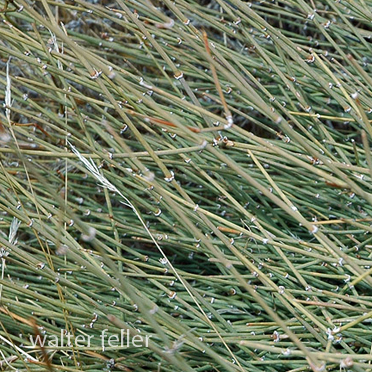Mormon Tea
Ephedra viridis Cov.Plant Symbol = EPVI
Other Names:
Green ephedra, jointfirWarning:
Do not misuse ephedra (mormon tea) as it can be very harmful to the human central nervous system and lead to many complications, even death in rare situations.Uses:
American Indians brewed its twigs and leaves to make tea, which they said helped them alleviate back and kidney pain, and consequences of late menstruation. Also, the leaves were used as a decongestant for the chest. Mormon tea as a tonic and blood purifier is still available today with many other uses. The seeds of fruits and plants that bore them were often eaten by such animals as the quail, deer, and antelope.Description:
A bushy evergreen plant covered by bright green and almost leafless branches up to 5 feet tall. The flowers are tiny and brown with yellow pollen clusters on male plants; the female ones have green ovules that turn into brown seeds.Habitat:
Grows on rocky or sandy slopes in the western US at elevations of 3,000 to 7,000 feet.Summary of:
Mark Pater
USDA, NRCS Tucson Plant Materials Center, Tucson, Arizona
Species Coordinator
M. Kat Anderson
USDA, NRCS, National Plant Data Center
c/o Department of Environmental Horticulture, University of California, Davis, California

Mormon tea